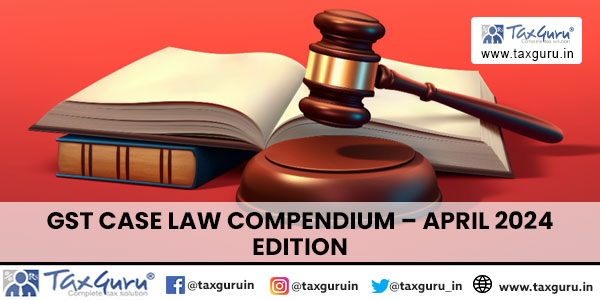CA Manish Agarwal
The Ministry of Corporate Affair (MCA) has notified 35 Indian IFRS standards (known as “Ind-AS’), without announcing the applicability date. In its press release, the MCA has stated that Ind-AS will be applied in a phased manner, to ensure smooth transition for all stakeholders.
The notification of Ind-AS is a significant step toward the implementation of converged standards in India. Companies may particularly note that the MCA will intimate the implementation date later; however, it does not state if the implementation is deferred. Also, the question regarding whether a company can apply Ind-AS early, if it desires to do so, and the manner of quarterly reporting still remains open.
Companies, which were preparing for conversion based on IFRS, should note that MCA notified Ind-AS are not the same as IFRS as issued by the International Accounting Standards Board (IASB) and there are a number of differences between the two. Also, the notified Ind-ASs are not the same as the near final Ind-AS drafts submitted by the Institute of Chartered Accountants of India (ICAI), some time ago, to the National Advisory Committee of Accounting Standards. This article provides an overview of key differences between MCA notified Ind-AS and IASB IFRS.
Deferment of certain standards/ interpretations
1. IFRIC 12 Service Concession Arrangements and SIC 29 Service Concession Arrangements: Disclosures are not notified with the other Ind-AS’s.
2. IFRIC 4 Determining Whether an Arrangement contains a Lease is not notified with the other Ind-AS’s.
3. IFRS 6 Exploration for and Evaluation of Mineral Resources will be applied from a future date with or without changes. However, the nature of expected changes is not clear.
Companies may need to evaluate whether there is a choice to early adopt the above standards, if they so desire. In making this evaluation, they will also consider paragraph 12 in Ind-AS 108 Accounting Policies, Changes in Accounting Estimates and Errors, which states that a company may consider the most recent pronouncements of the IASB in deciding accounting treatment for transaction, other event or condition not covered by an Ind-AS.
Revenue recognition
4. The application of IFRIC 15 Agreements for the Construction of Real Estate is expected to require many real estate companies to recognize revenue only on completion of construction. Considering the concerns raised by Indian real estate companies, IFRIC 15 has not been included in Ind-AS. Rather, the regulators have amended the scope of Ind-AS 11 Construction Contracts to include accounting for real estate developers. This will require the companies to apply the percentage of completion method, for real estate sales.
5. The ICAI is developing a new guidance note dealing with recognition and measurement of rate regulated assets and liabilities. The requirements in Ind-AS 18 Revenue will stand modified to the extent they are contrary to the said guidance note. A new footnote has been added in to Ind-AS 18 to clarify this aspect.
Employee benefits
6. IAS 19 Employee Benefits provides three options for recognition of actuarial gains and losses on defined benefit plans. However, under Ind-AS 19, all actuarial gains and losses, arising on both defined benefit plans and other long-term employee benefits, are recognized immediately in “other comprehensive income (OCI).”
7. As per IAS 19, the rate used to discount post-employment benefit obligations will be determined by reference to market yields on high quality corporate bonds. In countries where there is no deep market in such bonds, the market yields on government bonds will be used. In contrast, Ind-AS 19 requires the discount rate to be determined by reference to the market yields on government bonds, in all cases.
Exchange differences arising on long-term monetary items
8. IAS 21 The Effects of Changes in Foreign Exchange Rates requires exchange differences arising on restatement of foreign currency monetary items, both long term and short terms, to be recognized in profit or loss for the period. Ind-AS 21, however, allows companies an irrevocable option at the transition date whereby they can choose to recognize and accumulate exchange differences arising on restatement of long-term foreign currency monetary items, directly in equity. The amount so accumulated in equity will be transferred to profit or loss over the period of maturity of the item, in an appropriate manner. The option, once selected, is irrevocable and needs to be applied to all such items.
Financial instruments
9. Under IFRS, a FCCB is treated as a hybrid financial instrument having liability and derivative (conversion option) components. While companies measure liability at amortized cost, the derivative component is measured as fair value through profit or loss at each reporting date. However, Ind-AS 32 Financial Instruments: Presentation has been modified in a manner that the derivative component will be treated as a fixed equity component, if the exercise price is fixed in any currency. Hence, such FCCBs under Ind-AS will not be subject to fair value accounting through profit or loss at each reporting date.
10. Ind-AS 39 Financial Instruments: Recognition and Measurement prescribes that in determining fair value of a financial liability, which on initial recognition is designated at fair value through profit or loss, any change in fair value consequent to changes in the company’s own credit risk should be ignored. IAS 39 requires all changes in fair values in such liabilities to be recognized in the profit or loss.
11. Under Ind-AS, the early adoption of IFRS 9 Financial Instruments is not available and hence Ind-AS 39 will apply.
Investment properties
12. IAS 40 Investment Properties permits both the cost model and fair value model for subsequent measurement of investment properties. In a fair value model, a company recognizes any gain/loss arising on the fair valuation in the profit or loss for the period. However, Ind-AS 40 does not permit the use of fair value model but mandates the fair value disclosures for investment property.
13. As per IAS 40, a property interest that is held by a lessee under an operating lease may be classified and accounted for as investment property if, and only if, the property would otherwise meet the definition of an investment property and the lessee uses the fair value model for the asset recognized. This classification alternative is available on a property-by-property basis. Since Ind-AS 40 prohibits the use of the fair value model this option has also been deleted from Ind-AS 40.
Business combinations
14. IFRS 3 Business Combinations excludes common control business combinations from its scope. However, Ind-AS 103 requires such combinations to be accounted using the pooling of interest method. It also requires the transferee company to recognize goodwill computed as below:
Goodwill = (Amount recorded for share capital issued plus any additional consideration) minus share capital of transferor company
Ind-AS 103 also requires that financial information in respect of prior periods should be restated as if the business combination had occurred from the beginning of the earliest period presented in the financial statements, irrespective of the actual date of the combination.
15. IFRS 3 requires a bargain purchase gain on business combination to be recognized in profit or loss for the period. However, Ind-AS 103 requires the same to be recognized in OCI and accumulated in equity as capital reserve. However, if there is no clear evidence of bargain purchase, companies will recognize the gain directly in equity as capital reserve, without routing the same through OCI.
On similar lines, Ind-AS 28 requires that any excess of the investor’s share of the net fair value of the associate’s identifiable assets and liabilities over the cost of the investment is included in equity as “capital reserve.”
Consolidated financial statements
16. IAS 27 Consolidated and Separate Financial Statements, IAS 28 Investments in Associates and IAS 31 Interests in Joint Ventures provide companies an exemption from consolidated financial statements (CFS), application of equity method or proportionate consolidation, if certain criteria are met. They also require certain disclosures to be made in such cases. However, these aspects are not included in Ind-AS 27, Ind-AS 28 and Ind-AS 31 since the Companies Act and rules framed there-under will govern the preparation of CFS.
17. IAS 28 and IAS 31 contain scope exclusion with regard to investments in associates/ joint ventures held by mutual funds, unit trusts and similar entities including investment-linked insurance funds, if the such investments, on initial recognition, are either designated as at fair value through profit or loss or are classified as held for trading and accounted for in accordance with IAS 39. However, this scope exclusion has been deleted from Ind-AS 28 and Ind-AS 31 since the Companies Act, 1956, is not applicable to mutual funds, unit trusts and similar entities including investment linked insurance funds.
18. As per IAS 28, the investor should use the most recent financial statements of its associate in applying the equity method. Where the reporting dates of the investor and the associate are different, the associate prepares, for the use of the investor, financial statements as of the same date as those of the investor unless it is impracticable to do so. It also provides that in no case, the difference between the reporting date of the associate and that of the investor can be more than three months. IAS 28 also requires that uniform accounting policies should be used in the preparation of financial statements of the investor.
Ind-AS 28 also contains similar requirements. However, it provides an exemption from both the requirements on the grounds of impracticality.
19. A format for the preparation of CFS has been added in an Appendix to Ind-AS 27. It requires a parent to use the said format, or as near thereto as circumstances admit, in the preparation of its CFS. IAS 27, however, does not contain any specific format for the preparation and presentation of CFS.
Government grants
20. IAS 20 Accounting for Government Grants and Disclosure of Government Assistance gives companies an option to measure non-monetary government grants either at their fair value or at nominal value. Ind-AS 20 requires measurement of such grants only at their fair value.
21. IAS 20 also gives companies an option to present the grants related to assets, including non-monetary grants at fair value in the balance sheet, either by setting up the grant as deferred income or by deducting the grant in arriving at the carrying amount of the asset. Ind-AS 20 requires presentation of such grants in balance sheet only by setting up the grant as deferred income.
Borrowing costs
22. Ind-AS 23 Borrowing Costs provides specific guidance on computation of exchange differences arising from foreign currency borrowings to the extent they are regarded as an adjustment to the borrowing costs. However, this guidance is not there in IAS 23.
First time adoption of Ind-AS
23. Ind-AS 101 First-time Adoption of Ind-AS is applicable to the first set of annual Ind-AS financial statements prepared by a company. The first Ind-AS financial statements are defined as the first annual financial statements in which a company adopts Ind-AS by an “explicit and unreserved statement of compliance with Ind-AS.” Ind-AS 101 does not recognize or allow any fall back on IFRS for this purpose. This suggests that companies, which are already IFRS compliant, e.g., in accordance with the option given by the SEBI or to comply with foreign listing requirements, will need to prepare their opening Ind-AS balance sheet again.
It may be noted that the near final draft of Ind-AS 101 submitted to the NACAS had given companies, which have filed financial statements prepared in accordance with IFRS as issued by the IASB with regulatory authorities, an option to adopt the balance sheet so filed as at the end of the immediately preceding financial year as their opening Ind-AS balance sheet after making adjustments, for differences between Ind-AS and IFRS. However, this option has been deleted from Ind-AS 101, notified under the Companies Act.
24. IFRS 1 defines previous GAAP as the basis of accounting that a first-time adopter used immediately before adopting IFRS. Ind-AS 101, however, defines previous GAAP as the basis of accounting that a first-time adopter used immediately before adopting Ind-AS for complying with the reporting requirements in India.
25. IFRS 1 explains “transitional date” as the beginning of the earliest period for which a company presents full comparative information under IFRS. However, Ind-AS 101 provides transition date as the beginning of the current period, because comparative period information is not required. Thus, a company will not have an option to adopt Ind-AS from the beginning of the comparative period. However, if it desires to give comparative information as per Ind-AS, it has to be given on a memorandum basis.
26. Ind-AS 101 gives certain additional exemptions. The following are the key ones:
(a) IFRS 1 permits a first-time adopter to measure long-lived assets such as property, plant and equipment, intangible assets and investment property at deemed cost at the transition date. The deemed cost can be either equal to fair value at the transition date, or a revaluation under previous GAAP.
In addition, Ind-AS 101 also allows a first-time adopter to continue with the previous GAAP carrying value for all of its property, plant and equipment as recognized in the previous GAAP financial statements at the transition date and use the same as deemed cost at that date, after making necessary adjustments for decommissioning liabilities. Similar exemption is also available for intangible assets and investment property.
The near final draft of Ind-AS 101 had restricted this exemption only to property, plant and equipment, intangible assets and investment property, as recognized in the financial statements for the financial year ending as at 31 March 2007 or the relevant date, in case of a different financial year. However, this restriction does not exist in the final Ind-AS 101 notified by MCA.
(b) A first-time adopter can apply the option given in Ind-AS 21 to recognize exchange differences arising on long-term monetary items in a separate component of equity, on a prospective basis.
(c) Ind-AS 101 allows a company to use the transitional date circumstances to measure non-current assets held for sale and discontinued operations at the lower of carrying value and fair value less cost to sell.
27. IFRS 1 requires reconciliations for opening equity, total comprehensive income, cash flow statement and closing equity for the comparative period to explain the transition to IFRS from previous GAAP. Ind-AS 101 does not require comparative information to be given as per Ind-AS. It provides an option to give comparative period Ind-AS financial statements on memorandum basis. Accordingly, companies that do not provide comparatives need not provide reconciliation for total comprehensive income, cash flow statement and closing equity in the first year of transition but will disclose significant differences pertaining to total comprehensive income of the current year.
Interim financial report
28. In Ind-AS 34 Interim Financial Reporting, a footnote has been inserted which states that unaudited financial results required to be prepared and presented under clause 41 of the listing agreement are not an “interim financial report” as per this standard. This suggests that preparation of quarterly financial information will continue to be governed by the requirements prescribed in the listing agreement.
Presentation of financial statements
29. IAS 1 Presentation of Financial Statements permits companies to present all items of income and expense recognized in a period either in a single statement, or in two statements. Ind-AS 1 does not permit the two statements approach. It requires all items of income and expense to be presented in a single statement of profit and loss.
30. IAS 1 requires a company to present an analysis of expenses recognized in profit or loss using a classification based on either their nature or their function within the company. However, Ind-AS 1 mandates only nature-wise classification of expenses.
31. IAS 1 requires presentation of the statement of changes in equity (SOCIE) as a separate statement. Ind-AS 1 requires the SOCIE to be presented as a part of the balance sheet.
Statement of cash flows
32. In case of non-financial companies, IAS 7 Statement of Cash Flows gives an option to classify the interest and dividends paid and received as item of operating cash flows. Ind-AS 7, however, does not give this option. It requires interest and dividend paid to be classified as item of financing activity and interest and dividend received to be classified as investing activity.
Related party disclosures
33. Unlike IAS 24, Ind-AS 24 Related Party Disclosures exempts companies from making disclosures required in the standard if making such disclosures will conflict with the company’s duties of confidentiality prescribed in a law. This exemption may particularly help banking companies whose governing law prohibits certain disclosures.
36. IAS 24 contains a substance based definition of the term “close members of the family”. As per the standard, “close members of the family” of an individual are those family members who may be expected to influence, or be influenced by, that individual in their dealings with the entity. They may include (i) the individual’s domestic partner and children, (b) children of the individual’s domestic partner, and (c) dependants of the individual or the individual’s domestic partner. However, Ind-AS 24 restricts the definition of the term “close members of the family” to the persons specified within meaning of “relative” under the Companies Act 1956 and that person’s domestic partner, children of that person’s domestic partner and dependants of that person’s domestic partner.
37. Ind-AS 24 provides an additional guidance whereby items of similar nature to be disclosed in aggregate by type of related party. However, this is not done in such a way as to obscure the importance of significant transactions. IAS 24 does not provide any such guidance.
Earnings per share
38. Unlike IAS 33, Ind-AS 33 Earnings Per Share does not give an option to present EPS only in CFS. It requires EPS to be presented both in the standalone financial statements (SFS) and CFS. Also, no exemption from presentation of EPS is given to unlisted companies.
39. Ind-AS 33 recognizes that due to legal override, certain items of income and expense may be charged directly to equity, which, as per the requirements of Ind-AS, should have been recognized in profit or loss for the period. It requires that for the purpose of calculation of basic and diluted EPS, these amounts should be included in profit or loss for the period, irrespective of whether these amounts are debited or credited to equity.
Others
40. Under IFRS, IAS 41 Agriculture requires biological assets to be measured at fair value. However, Ind-AS does not contain any standard corresponding to IAS 41.
41. Unlike IFRS, the Framework for Preparation and Presentation of Financial Statements has not been notified under Ind-AS. However, there are certain Ind-ASs, e.g., Ind-AS 1 and Ind-AS 8 that refer to the Framework.
42. If section 391/394 gets amended, accounting in the case of restructuring and merger would have to follow Ind-AS. However, there is no clarity on whether the amendment to section 391/394 will apply retrospectively or prospectively. Nevertheless, it appears to be highly unlikely that section 391/394 amendment will apply retrospectively in which case, the accounting under erstwhile court schemes will continue, though it may otherwise not meet the requirements of Ind-AS.
43. Further differences may arise, depending on the manner in which the Companies Amendment Bill is passed, particularly provisions relating to section 100, 78, schedule VI, schedule XIV, consolidation requirements, etc. In addition, differences may arise in the way in which future changes in IASB IFRS standards are updated under Ind-AS. Also, local interpretations of Ind-AS by standard setters and regulators may differ from global practice.
Conclusion
The notification of Ind-AS is an important step toward the application of IFRS converged standards in India. However, before the actual implementation of these standards, regulatory bodies need to take certain further actions. These include regulatory changes in the Companies Act, particularly, sections 391, 394, 100, 78, schedule VI and schedule XIV, to implement Ind-AS.
As can be seen there are numerous differences between Ind-AS and IASB IFRS, making it practically difficult for many companies to make an assertion that their Ind-AS financial statements are IASB IFRS compliant. Nevertheless, every company should endeavor to apply Ind-AS in a manner that the departures from IASB IFRS are minimal. This may enhance the understandability of the Ind-AS financial statements by global investors. Depending on the need, such companies can simultaneously prepare IASB IFRS financial statements or convert with minimal effort Ind-AS financial statements to IASB IFRS financial statements. It may also be possible for a few companies to achieve dual compliance at a future date, provided the mandatory differences (for example, real estate accounting) do not impact them or are immaterial.
Manish Agarwal




















where is the notification ?
I can only find A press release stating that IND As is published in the MCA site
and a press release stating that date of applicability of IND AS.
Is press release legally binding? shouln’t a notification under section 133 be made so as it to be legally binding ?
Manish, very good work, quick reference to the differences, thanks
Good Thanks
Manish,
Good work. Can you publish the full text of all the applicable IFRS in Indian context.
Alternatively , put up the link.
Thanks
Sanjib
Great! Exactly the thing what I was looking for..
Great job
Good work Manish. Thank you.
i owe you to get valuable info from this article
Good one !!!!
But any chance, when will MCA come out with final notification ????
Excellent job done……………..